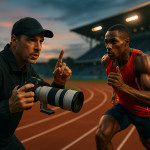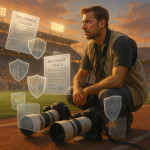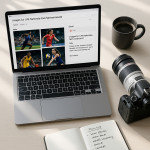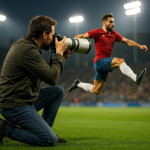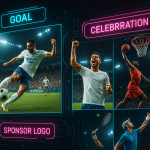Gear roadmap for aspiring sports photographers: capture speed without debt
Stop guessing which camera to buy next. This roadmap shows you how to grow from entry-level kit to pro-ready tools without sinking into debt. We cover four clear stages, price benchmarks, funding tactics and workflow tips so you can freeze the action and build a profitable sports photo practice.
Why you need a gear roadmap
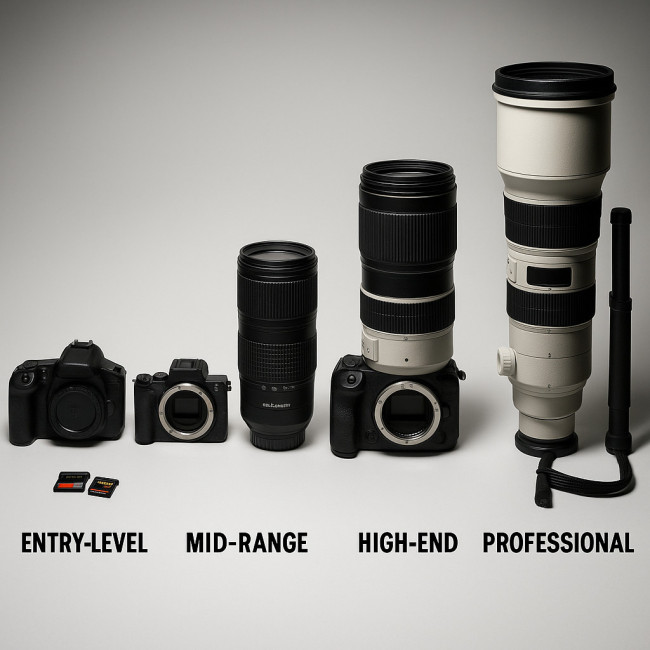
Sports photography punishes slow autofocus and poor low-light performance. Yet maxing out a credit card for the latest flagship body rarely makes business sense. A staged plan lets you match expense to revenue, experiment cheaply and stay profitable even during off-season lulls. When you follow a roadmap you evaluate not only technical specs but the real-world fees you can command, the turnaround deadlines you must meet and the redundancy clients expect at higher competition levels. It keeps emotion out of purchasing decisions and shifts the question from “What's the newest body?” to “What gear removes the biggest obstacle between me and the next cheque?”.
Stage 1 – Leverage what you already own (≈ 0 – $1 000)
Camera body
A crop-sensor DSLR or mirrorless camera that shoots 5–7 frames per second is enough for local games. Prioritise:
- Reliable continuous autofocus (AF-C).
- Usable high-ISO up to 3200.
Lens choice
You can cover an entire junior football match with the “plastic fantastic” 50 mm f/1.8 and a kit 70–300 mm zoom. Use the prime for low-light indoor courts; the zoom handles daylight sidelines.
Accessories
- Two 64 GB UHS-I cards for burst mode.
- Spare battery.
- Basic monopod to reduce arm fatigue.
Stage 2 – The first serious upgrade (≈ $1 000 – $2 000)
Once your portfolio attracts paying parents and local clubs, invest where image quality bottlenecks:
Buy used pro glass
A second-hand 70–200 mm f/2.8 from a reputable dealer typically costs $900–1 200 and elevates subject isolation dramatically.
Body with higher buffer
Look for 10 fps and dual card slots. Models like the Canon 7D Mark II, Nikon D500 or Sony α6400 (used) sit around $800–1 000.
Rugged storage & straps
A weather-sealed backpack and quick-release strap slash turnaround time between locations and protect gear that is now worth real money.
Stage 3 – Semi-pro kit that pays for itself (≈ $4 000 – $5 500)
Full-frame speed demons
Upgrade only when client expectations move to media outlets or minor leagues. A used Canon R6 or Nikon Z6 II delivers 12–14 fps, superior AF tracking and clean ISO 12 800 for night arenas.
Fast telephoto reach
Add a 300 mm f/2.8 or 200–400 mm f/4 (both can be rented per match). At this tier, serious brands also expect you to prove ROI on sponsored images.
Dual-body workflow
Shoot with a longer lens on one body and a 24–70 mm f/2.8 on the second. You'll cover athlete portraits, hero shots and crowd reactions without lens swaps.
Stage 4 – Pro readiness without personal debt (≈ $8 500 – $10 000)
Flagship rentals
Olympic-level autofocus (e.g., Canon R3, Sony α1) costs $5 000 + new. Rent bodies for critical tournaments while continuing to own Stage 3 gear.
Super-telephotos
A 400 mm f/2.8 exceeds $10 000 new. Weekly rental rates around $250 can be billed directly to the client.
Liability & gear insurance
At this point, you're shooting in packed stadiums. Secure essential insurance cover before one spill wipes out years of savings.
Source : B&H Photo retail list 2024
Comparative gear roadmap table
| Stage | Key Body | Main Lens | Typical Cost | Who Should Upgrade |
|---|---|---|---|---|
| 1 | Entry DSLR/Mirrorless (5–7 fps) | 70–300 mm f/4-5.6 | $800–1 000 | Hobbyists building portfolio |
| 2 | Used semi-pro body (10 fps) | 70–200 mm f/2.8 | $1 800–2 400 | Shooting local leagues |
| 3 | Full-frame 12 fps | 300 mm f/2.8 (rent) | $4 500–5 500 | Regional press & sponsors |
| 4 | Flagship 20 fps (rent) | 400 mm f/2.8 (rent) | $8 500–10 000* | National & international events |
*Combination of owned Stage 3 gear plus rentals.
Funding the roadmap without debt
- Rent first, bill later : Fold rental fees into client quotes. Most federations accept this when you illustrate the performance benefit.
- Buy refurbished or used : Factory-refurbished bodies carry warranties and cost up to 30 % less.
- Offer print packages : Parent-funded prints often out-earn the day rate at youth tournaments.
- Crowdfund a lens : Loyal fan bases love seeing their club captured sharply—set up a transparent goal with perks.
- Sell archival shots : Use AI tagging workflows to monetise older images through stock or team archives.
Workflow tricks that make any gear faster
- Map custom buttons for AF-ON and eye-tracking to minimise missed frames.
- Pre-focus on anticipated action zones (finish line, penalty area).
- Use back-button burst: short bursts reduce buffer overload.
- Carry a compact rain cover; weather delays ruin more shoots than slow shutters.
- Batch-rename files on ingest so clients feel organised images match pro-level gear.
Quick self-test: Are you ready for the next tier?
FAQ
- Which lens should I buy first for sports?
- The 70–200 mm f/2.8 is the most versatile starter; its fast aperture works indoors and outdoors.
- Is crop-sensor or full-frame better for beginners?
- A crop body gives you extra reach for the same lens, keeping costs down. Upgrade to full-frame when low-light noise becomes a limitation.
- How do I know when to rent instead of buy?
- Rent when a piece of gear is required for fewer than four shoots per quarter or costs over one month of net photography income.
- Where can I showcase my sports portfolio?
- Create a profile in the dedicated sports section of Artfolio—discover sports photographers on Artfolio—to reach brands, clubs and editorial buyers.
- Do I need special insurance for stadium work?
- Yes. Venue contracts often demand public liability and equipment cover. Read our guide on sports photographer insurance essentials.
Ready to level up?
You now have a clear, debt-free path from hobbyist to pro sports shooter. Map your next upgrade against real income, rent strategically and focus on client value. When you're ready, share your best action shots on Artfolio to attract the next big brief.
Take action : List your current gear, pinpoint the weakest link and schedule a rental test for the very next match.


